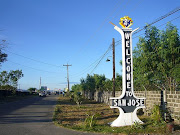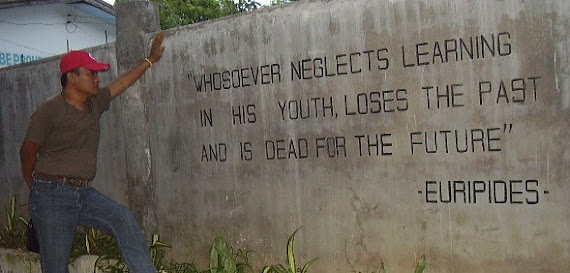One of the most visible and effective features of Leni Robredo and Kiko Pangilinan’s campaign trail are murals painted all over the Philippines. Here in Occidental Mindoro, there is a prominent political wall painting that can be found in the town called Sablayan. It was first in the province if I were not mistaken.
More than ever, mural paintings became a form of valuable testimony of how intense the forthcoming elections in May would be. Even the “innocent” artistic expressions of our youth were not spared by acolytes of this arrogant and repressive, if not immoral, regime.
Erased
There are two sad incidents of whitewashing of pink-colored murals of Vice-President Leni Robredo and Senator Kiko Pangilinan: in Echague, Isabela, on February 17 and in Padre Diego Cera corner C5 Extension, Pulang Lupa Uno, Las Piñas City today, March 13, 2022.
Both walls are parts of the private property of certain individuals. The Youth for Leni-Las Piñeros condemned the incident as “harassment” and “obvious repression.” Reportedly, the unidentified men who painted over the murals with white color are identified with DPWH Secretary and now a senatorial candidate in the slot of the deposed dictator’s son Marcos Jr and Mayor Sara Duterte, Mark Villar, another infamous dynast in the country.
The Leni-Kiko mural in Isabela on the other hand was vandalized or removed by no less than the Commission on Election (COMELEC) itself. Despite this, the so-called Pinklawan Artists said they are even more determined to fight for their right to express support for the tandem.
The two groups of young artists from Isabela and Las Piñas City cried foul and called it a form of “harassment” and “repression” by concerned authorities.
Etymology
The word mural originates from the Latin word “murus”, meaning “wall”. (That is why Intramuros was once caled the Walled City.) Mural art today is any piece of drawing painted or applied directly onto a wall, ceiling, or other larger permanent surfaces, flat, bowl-shaped, or curved. Some sources say that the art of muralism flourished during the 1920s, after the Mexican revolution. In that era, it became a powerful visual communication tool to promote the opinion of the people and to transmit social and political messages toward social change and solidarity was recognized. Since then, murals became symbols of freedom and hope, worldwide.
Mural painting is also a usual subject of controversy, especially those expressing one’s political opinion. Well, we cannot separate arts from politics, as we cannot also separate our political “murals” (read: choice of candidates) from our morals (read: personal values). Our votes are reflections of our values and morals.
Sablayan Muralists
They proudly call themselves Volunteer Artists of Sablayan Para kay Leni. The group is composed of Christerlo Rabanal, Kaizer Casil, Tiziah Diodoco, Erica Villapando, Jane Antonette Patal, Anicia Rizzi, Nina Villapando. Though they do not consider themselves artists, Kathleen Nardo, Jann Mariz, and Josefa Lontoc were with them in this heroic call of the times as advisers and general factotum if I could call them that way.
The mural can be found in the corner of J. Daño and S. Dangeros Streets in Barangay Buenavista, Sablayan (near Mar Sharkin Commercial), Occidental Mindoro, adjacent to Sablayan Public Market. It is a wall of a building razed by fire sometime last year. The wall which was blackened by coal and smoke gradually returned to life and transformed into a symbol of a bright and gloomy future. For indeed, like what the artists believe, kulay rosas ang bukas. A future when this nation is at the pink of health, so to speak.
They started the tedious painting in the first week of February until the second week of March. “We are all 100% volunteers and we do not expect any compensation whatsoever,” says Anton Ragos, their group leader. “All of the materials we used including plywoods, paints, brushes, and snacks came from local Leni-Kiko supporters. There are lots of them and they are so generous for the cause,” he further added.
All of the members of the Volunteer Artists of Sablayan Para kay Leni believe that making murals as campaign material is a manifestation of their moral and political stand.
Art as Politics
During the dark days of Martial Law, the apex of our nation’s modern-day
political unrest gave birth to known Filipino social realists who felt
responsible to create art that would inspire the people to take political
decisions and actions. The common denominator of the artworks then and
today is the people’s protest against anti-people policies of the government
and their struggle and aspiration for socio-political transformation.
Every muralist or artist, in general, must always question the status quo and maintain and fight for the inherent artistic freedom of expression, especially in these crucial moments onward to elections. The role of such an art is very important for it can be an arena of the decisive battle between the friendly forces versus the enemies of life, beauty and truth come May and thereafter.
Vandalizing any work of art or a mural is turpitude. Such an act could only come from the artless rats staying on a sinking ship.
----------
References:
https://www.widewalls.ch/magazine/what-is-a-mural-the-history-and-meaning
https://www.cnnphilippines.com/life/culture/arts/2017/02/17/art-fair-2017-cover.html







This comment has been removed by a blog administrator.
ReplyDeleteAng una ay yung sa Labangan SJ nakapaint sa disgarded container van.
ReplyDeleteA ok. Thanks. Hindi ko alam story noon.
ReplyDelete